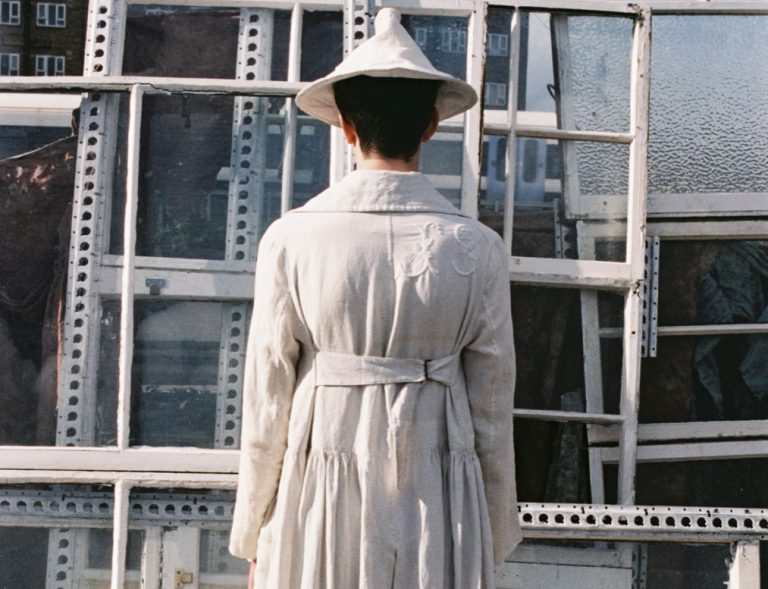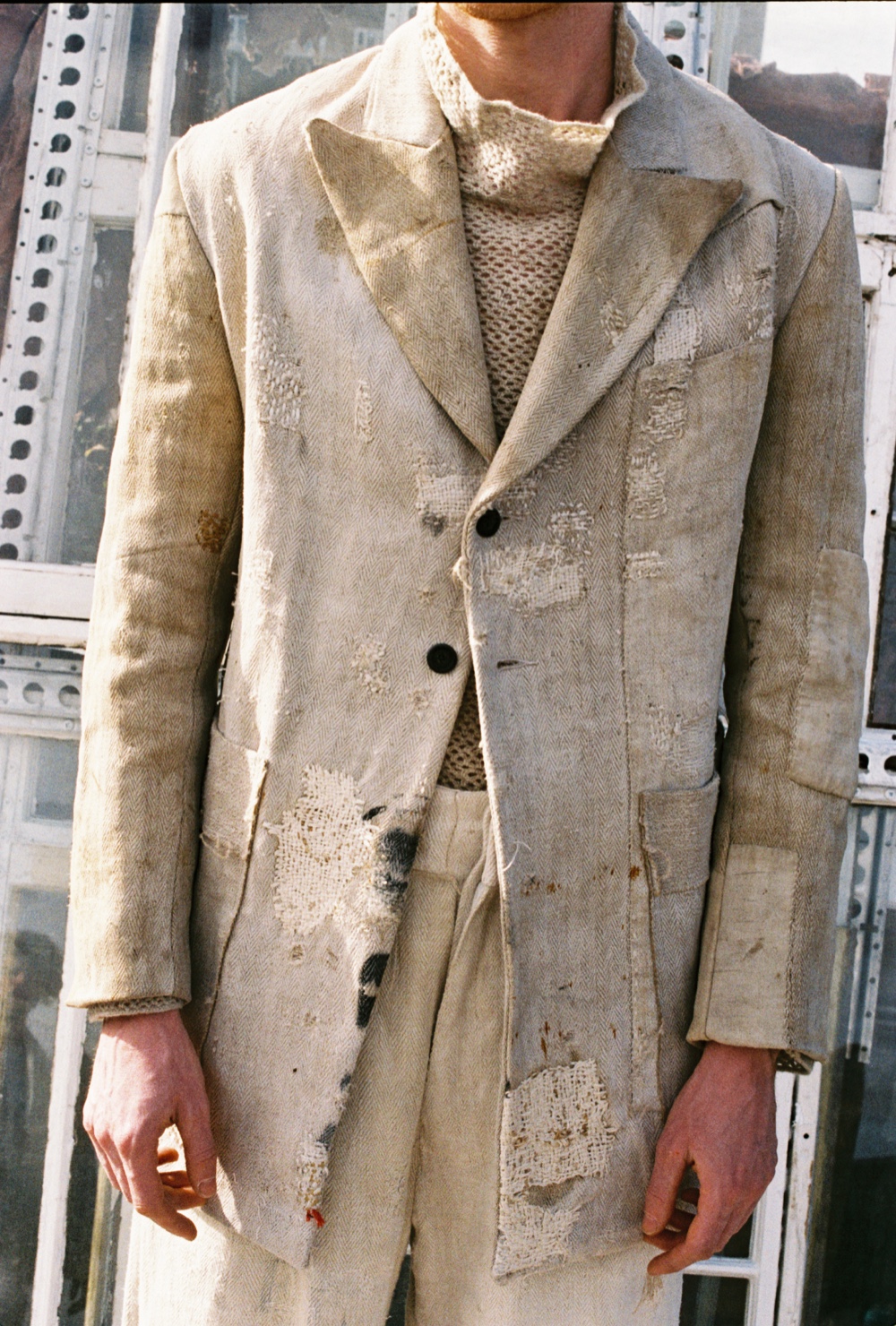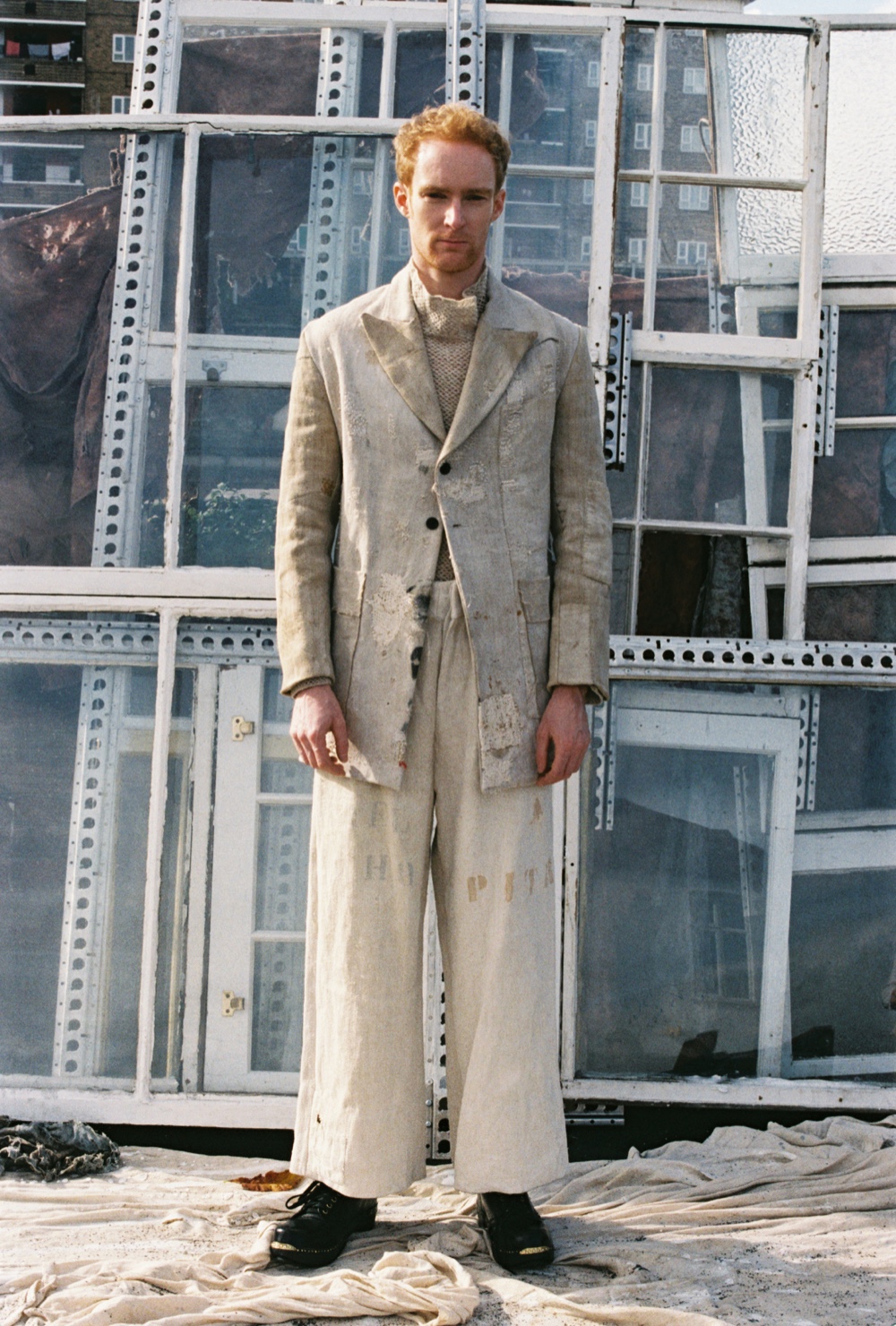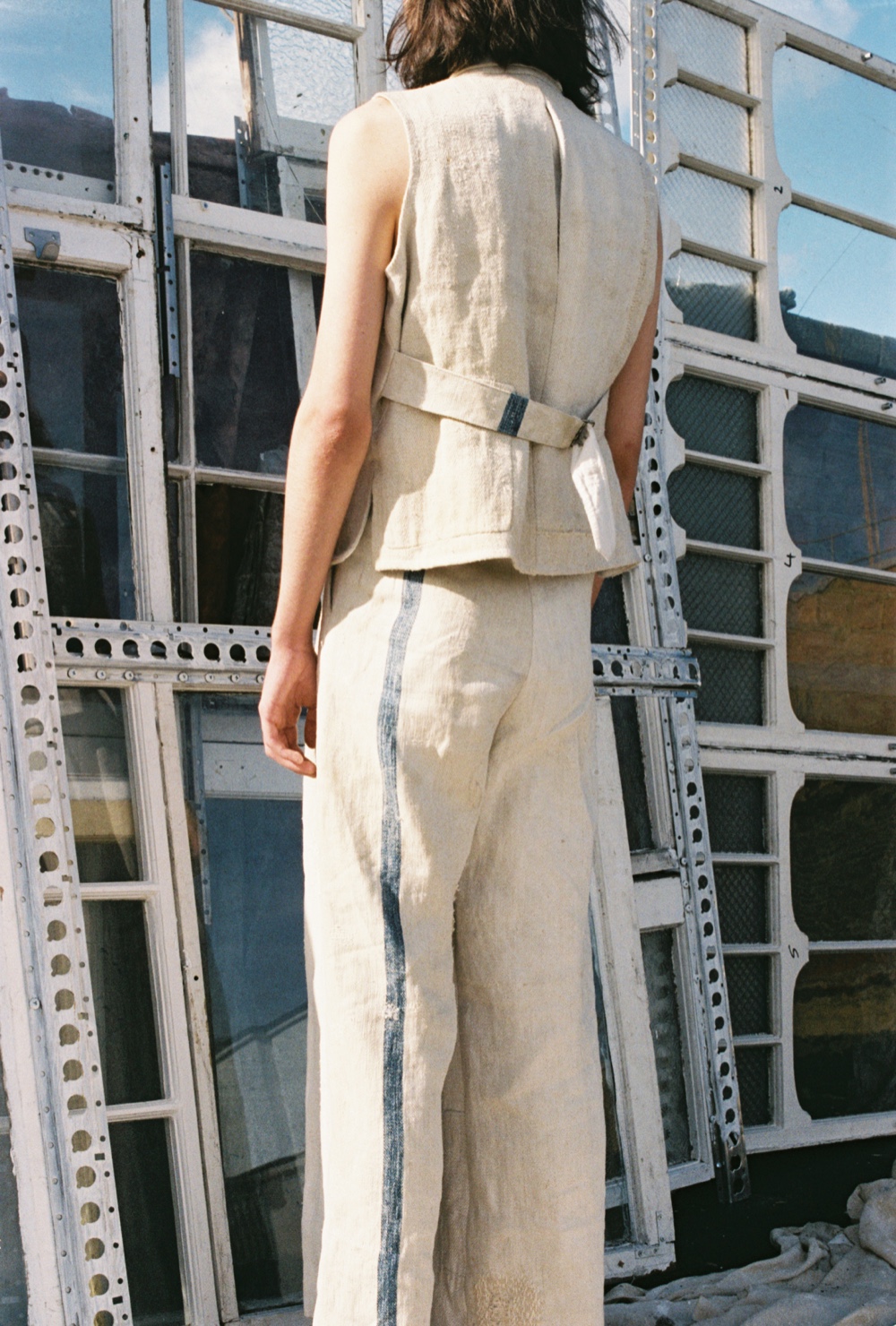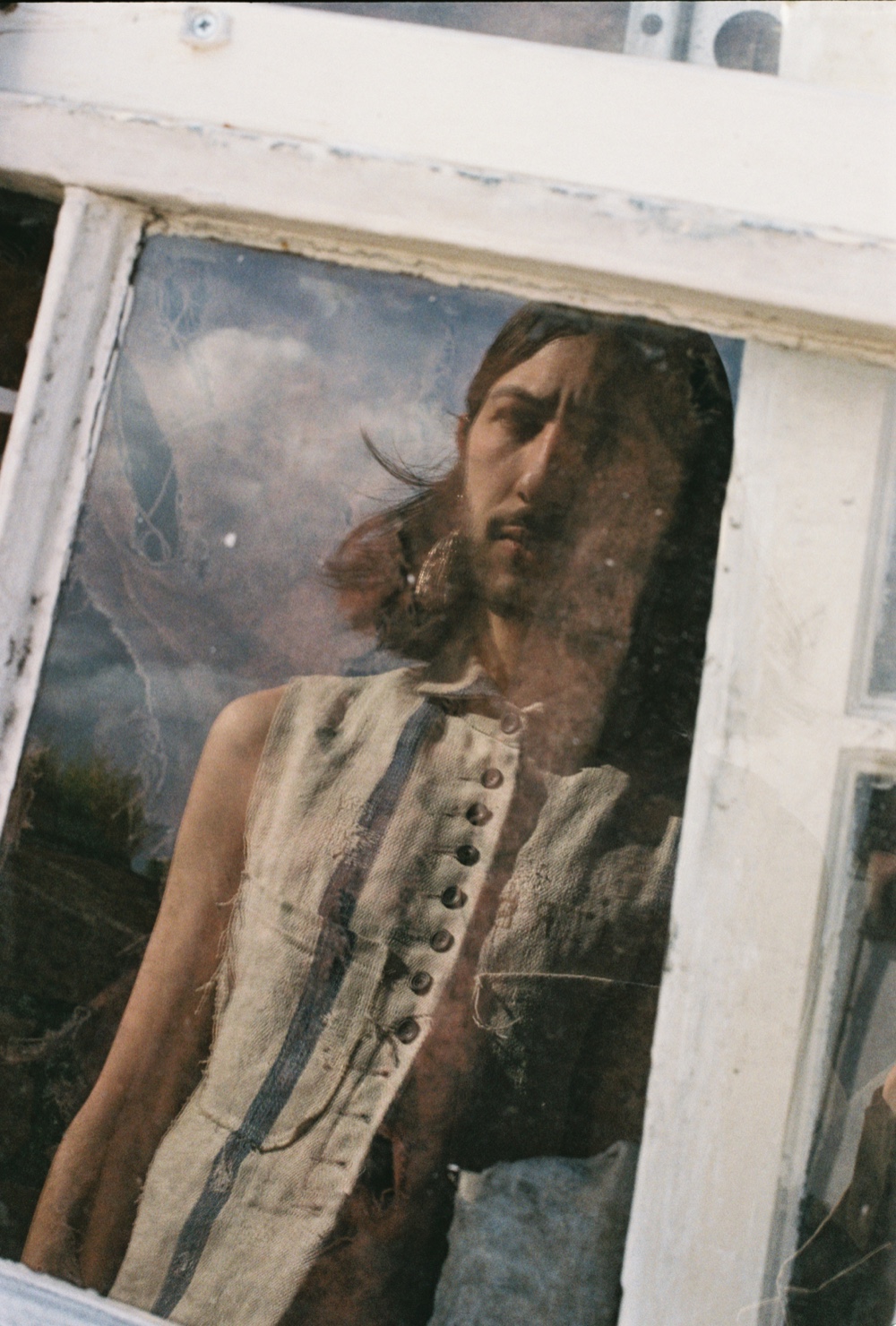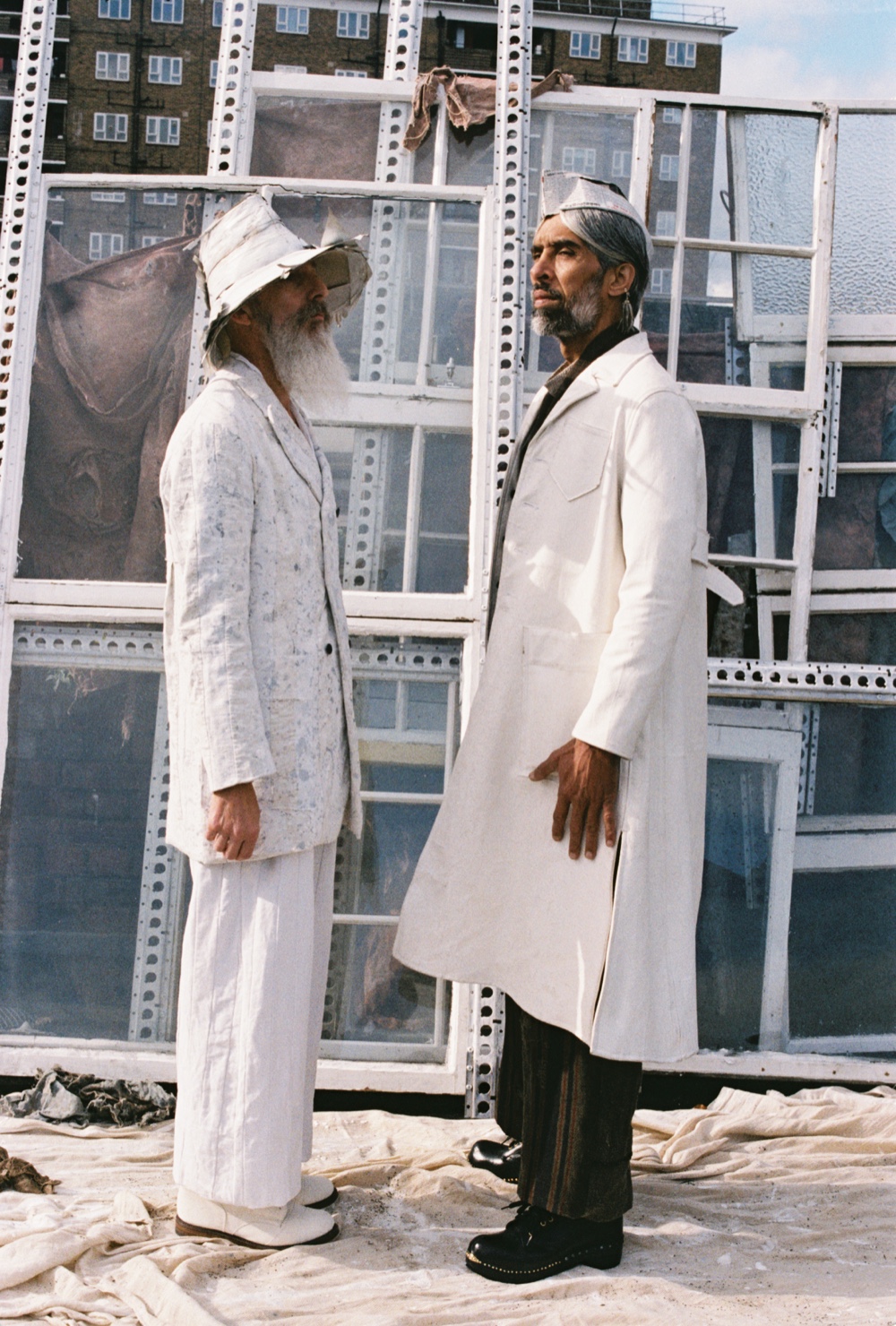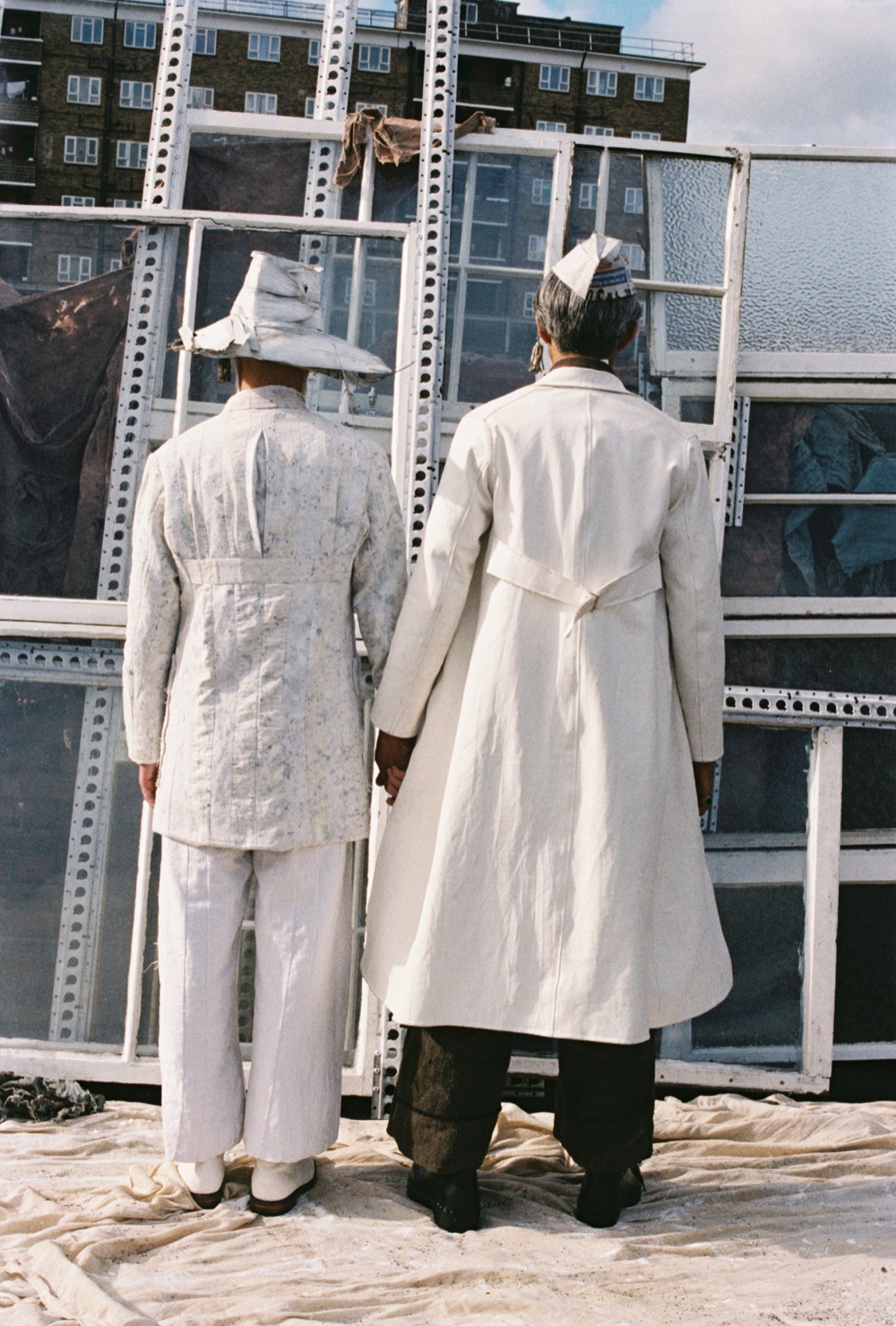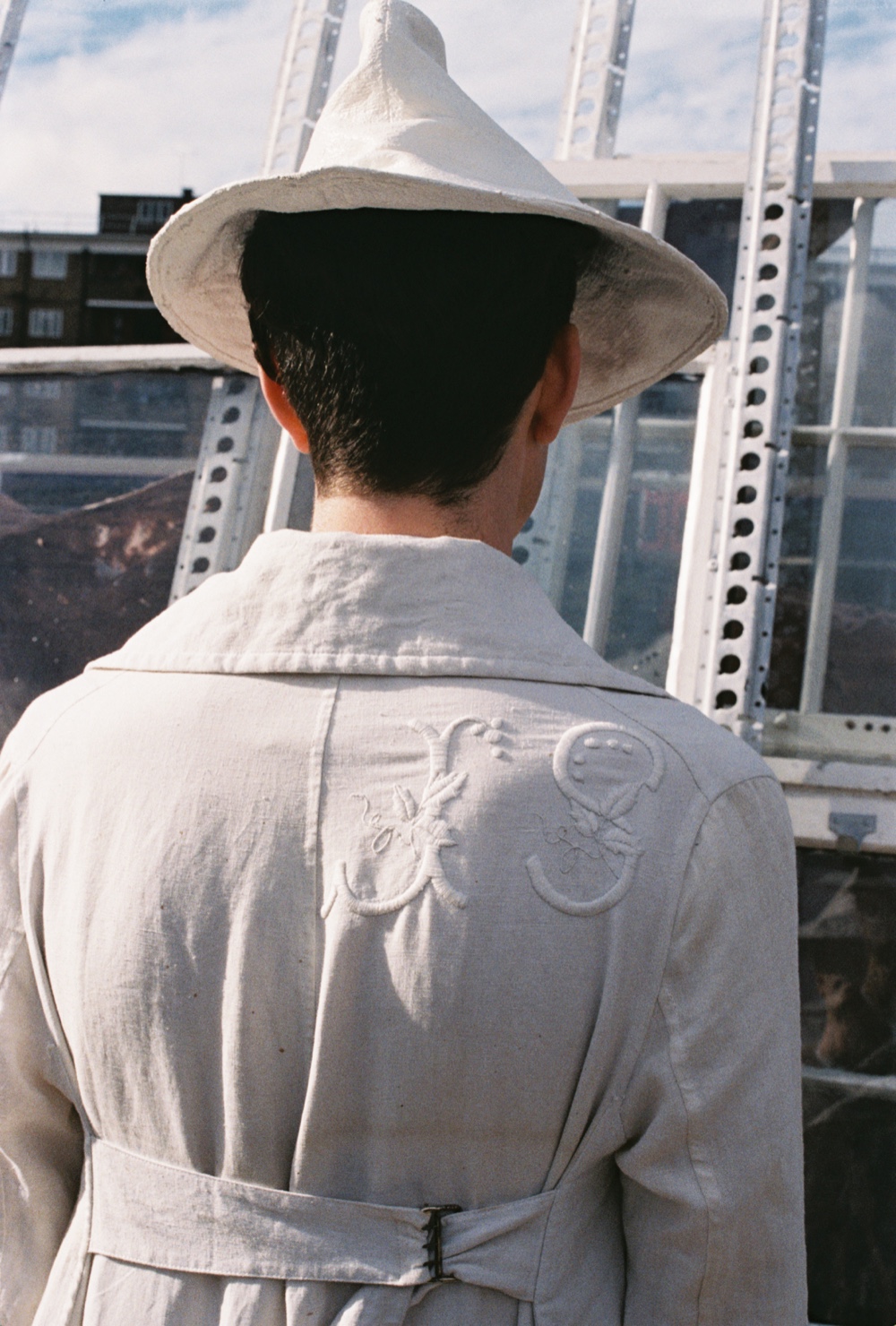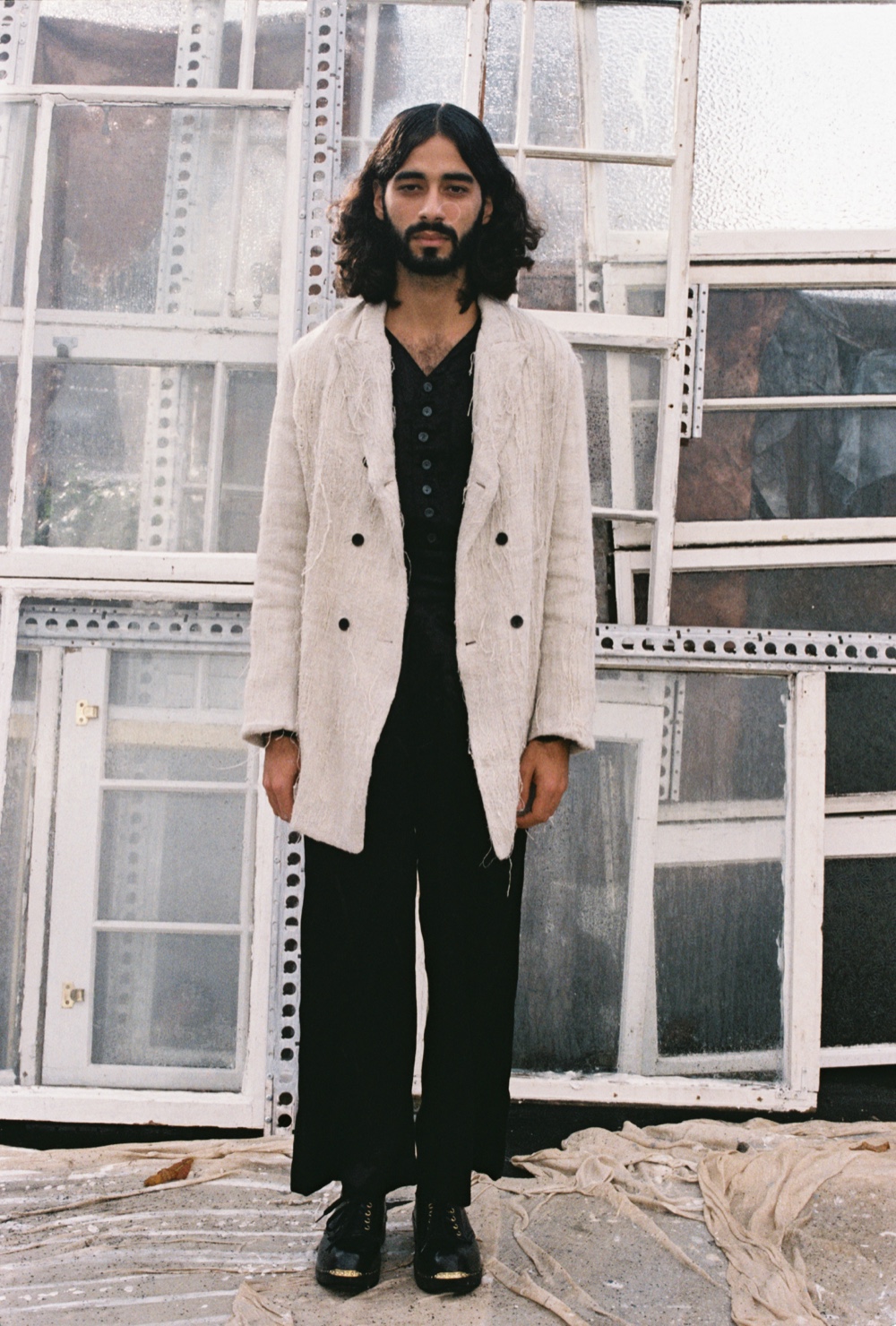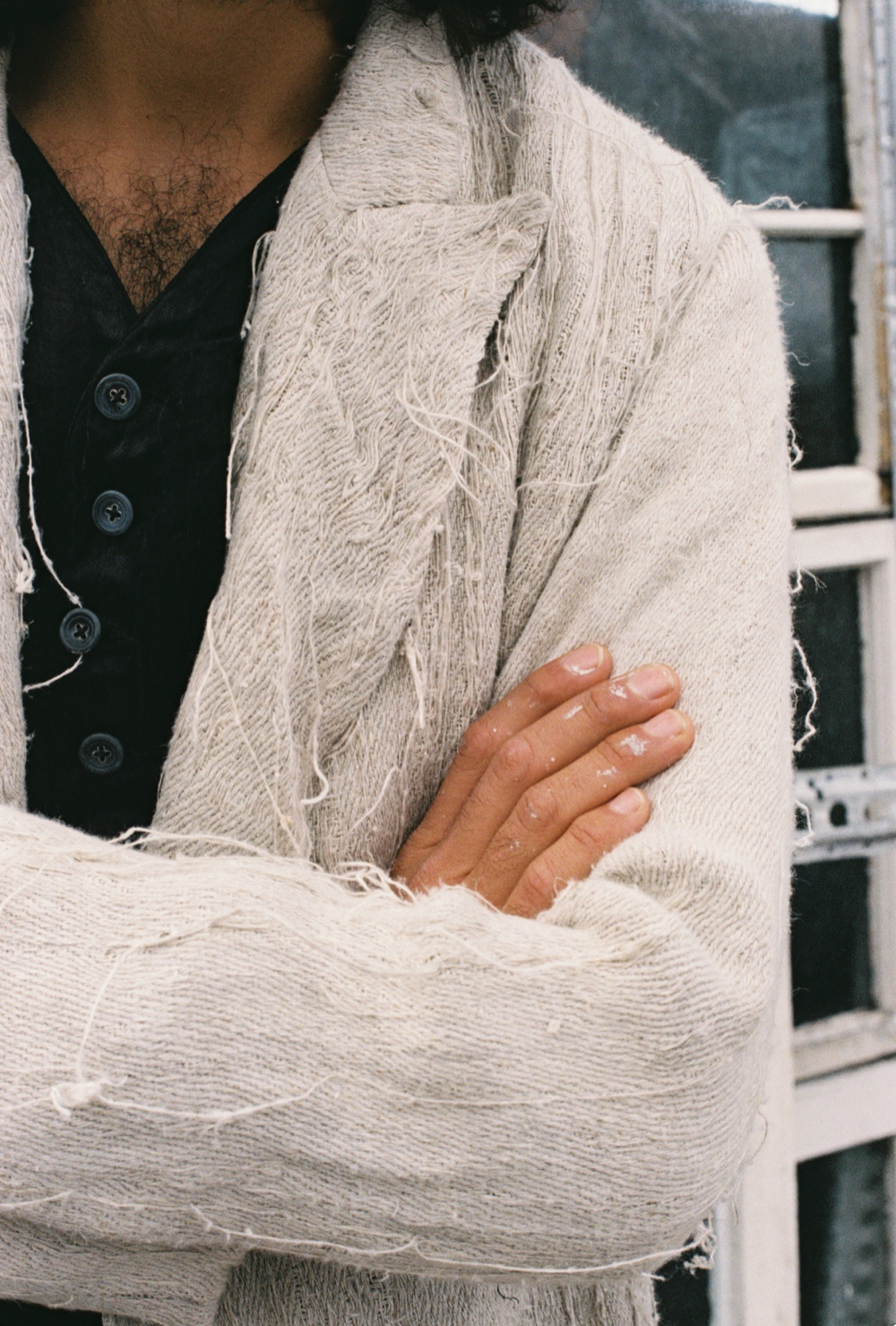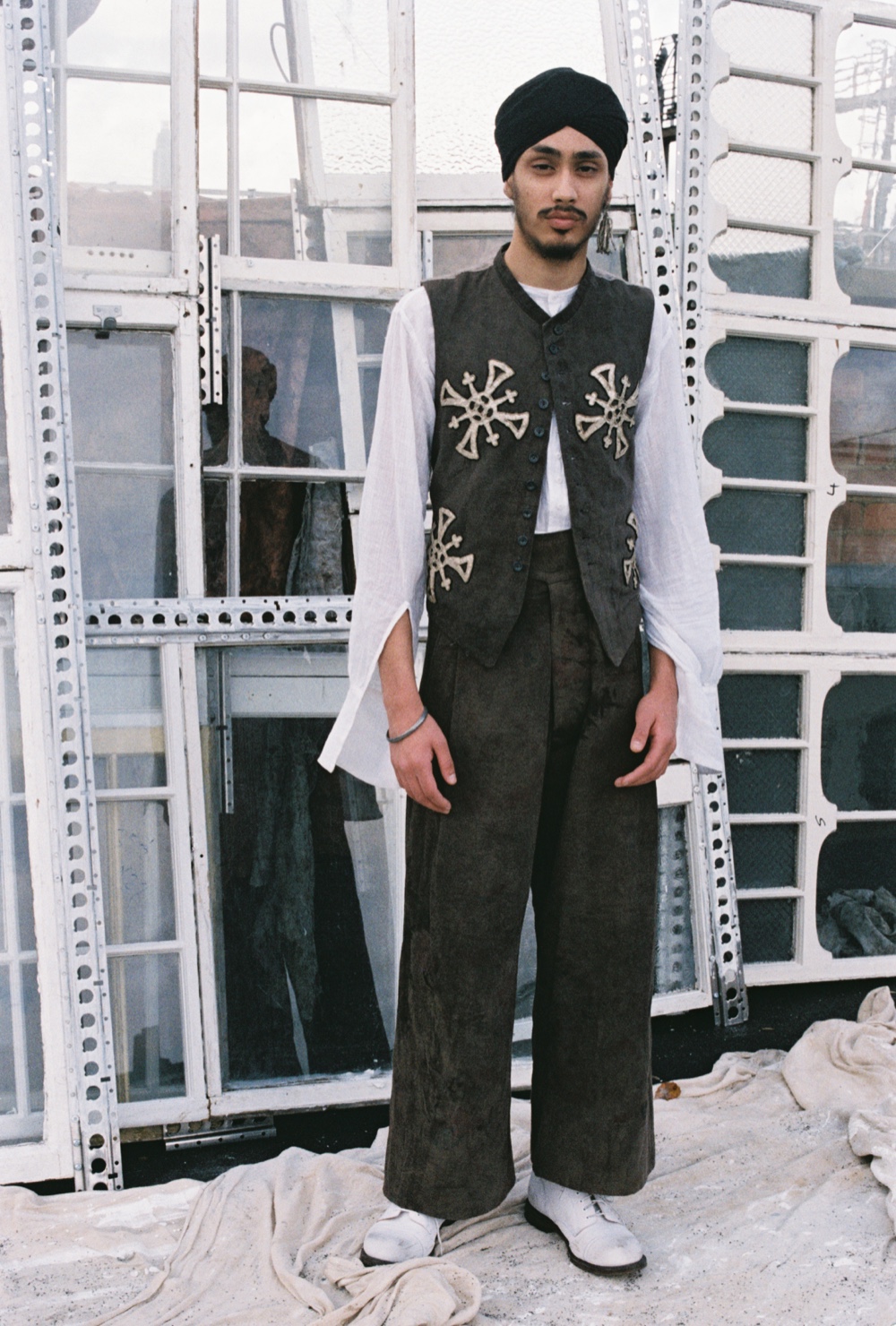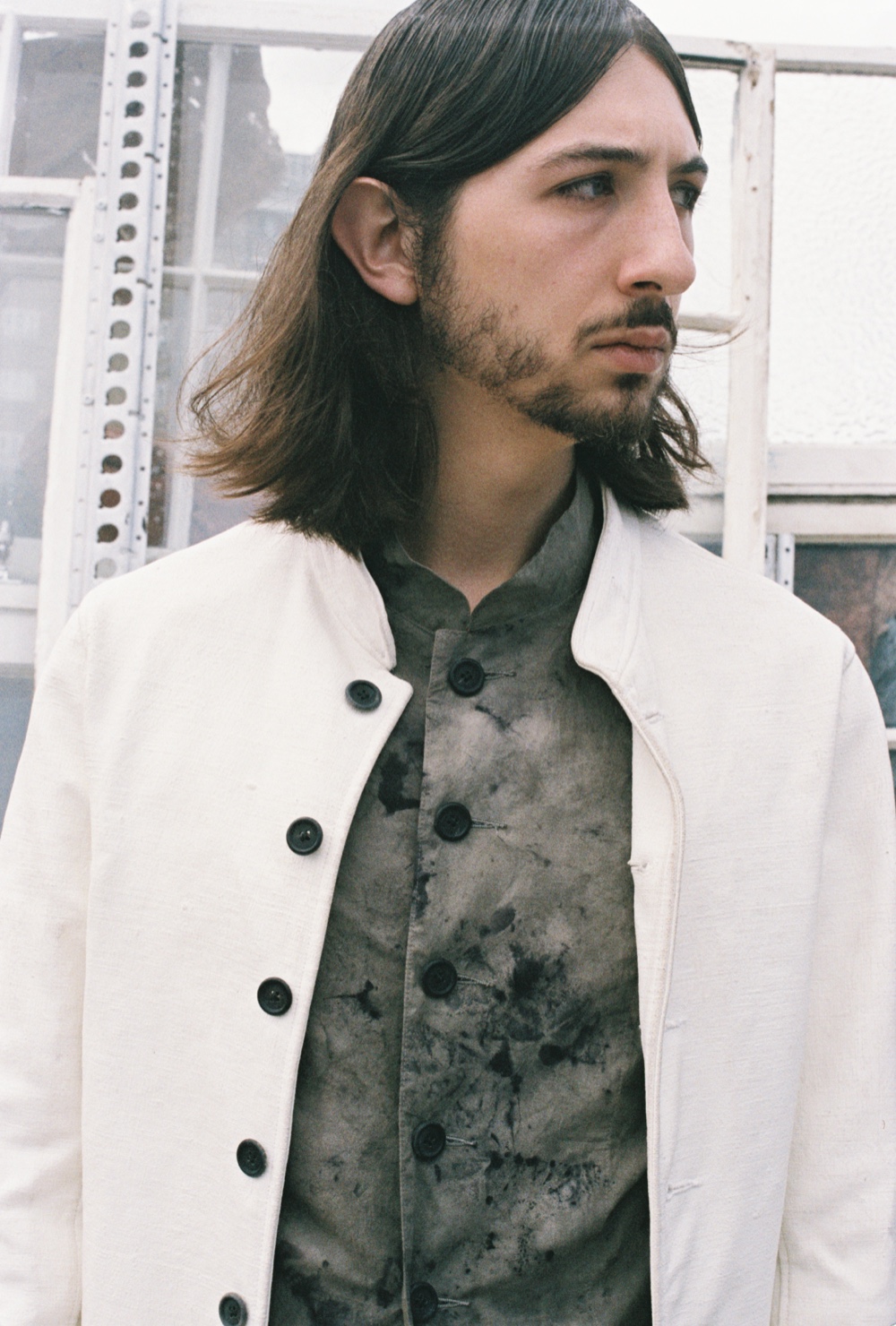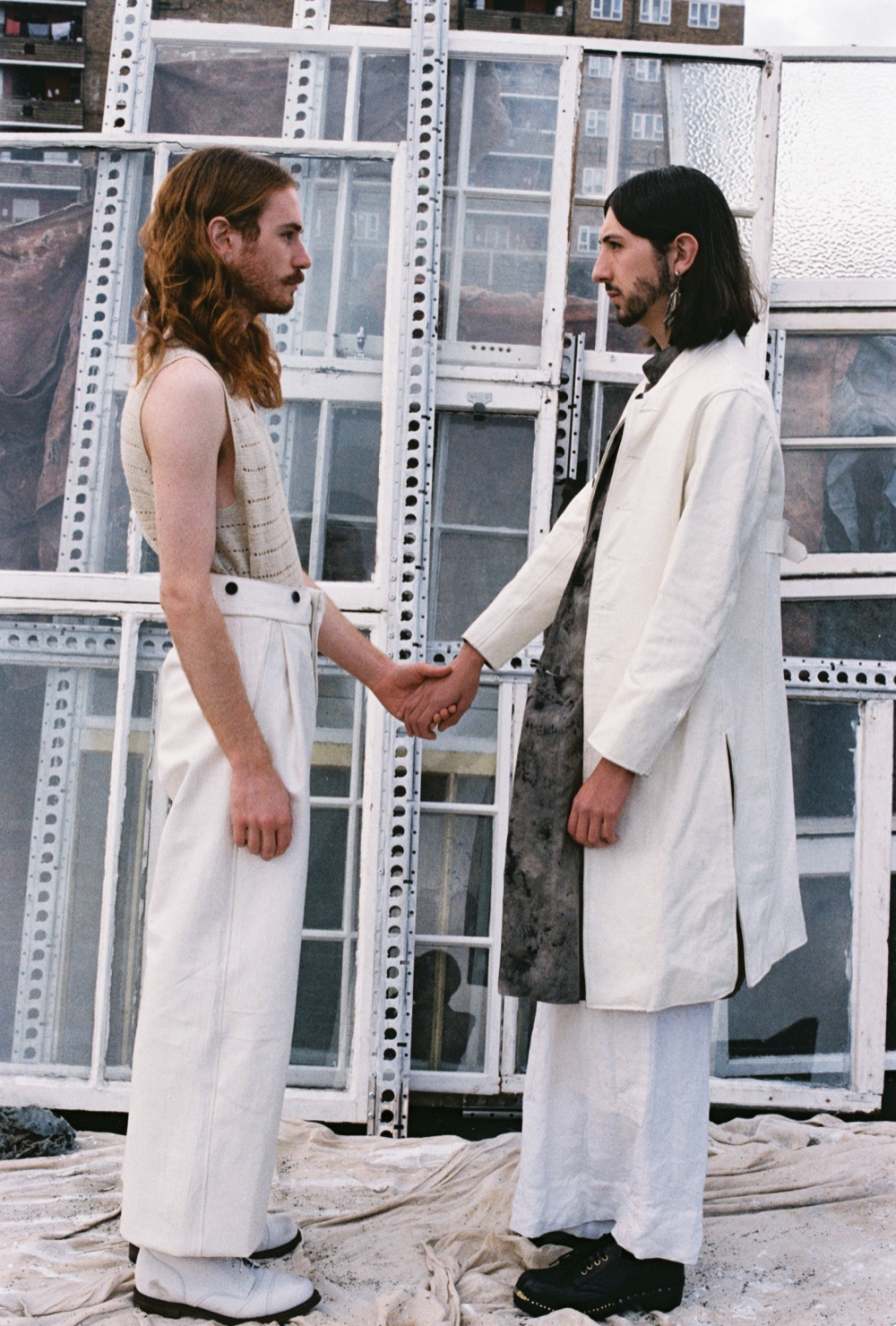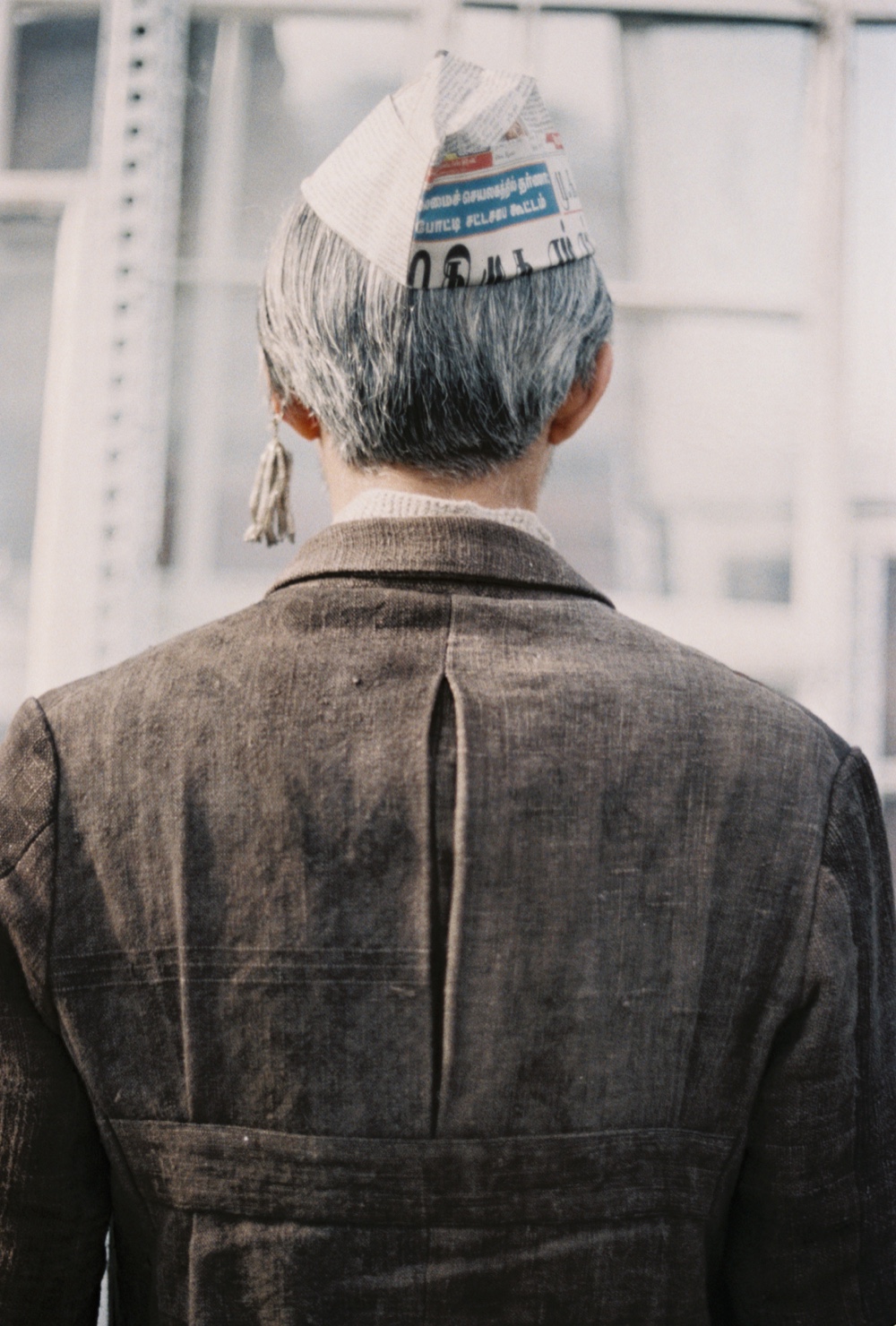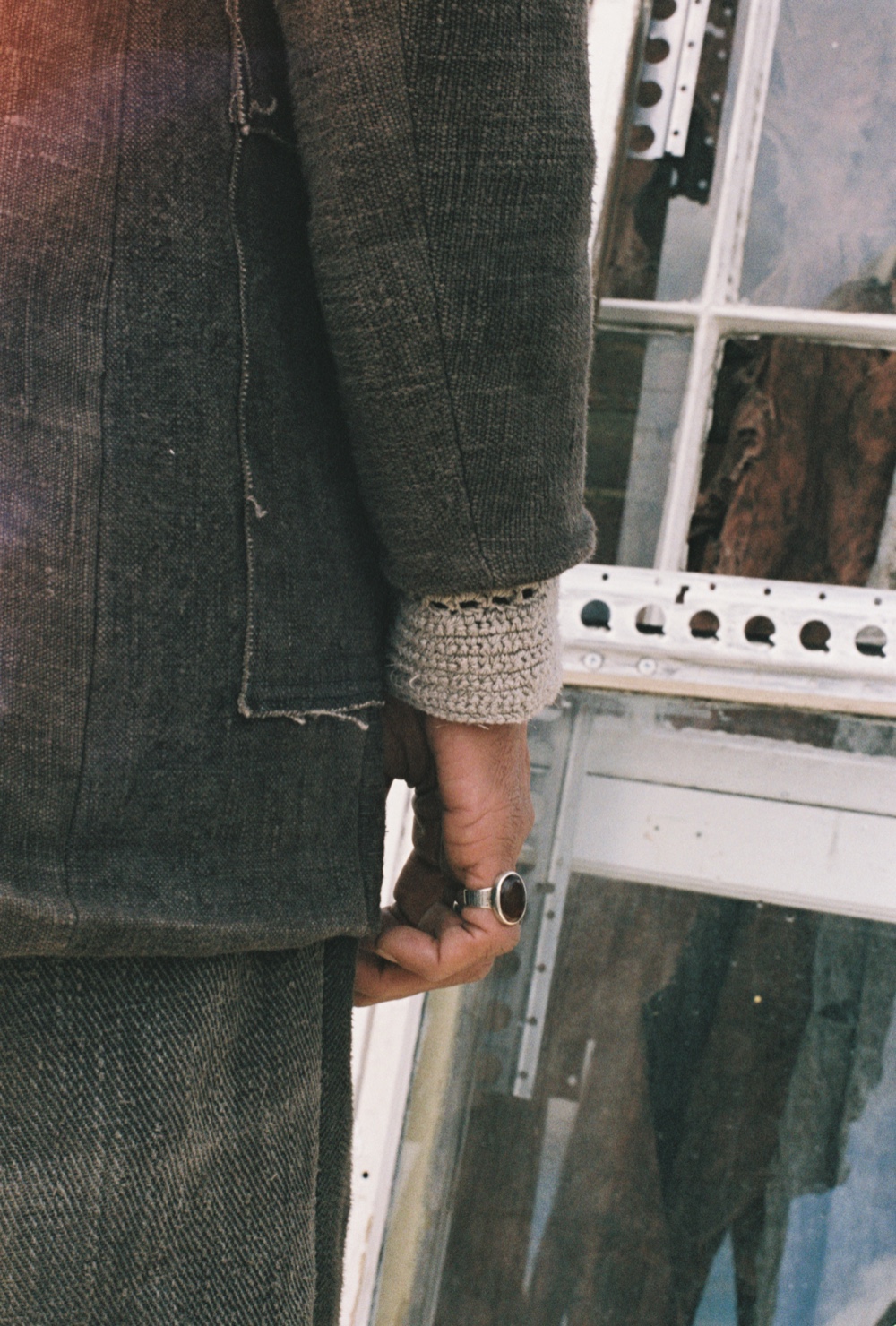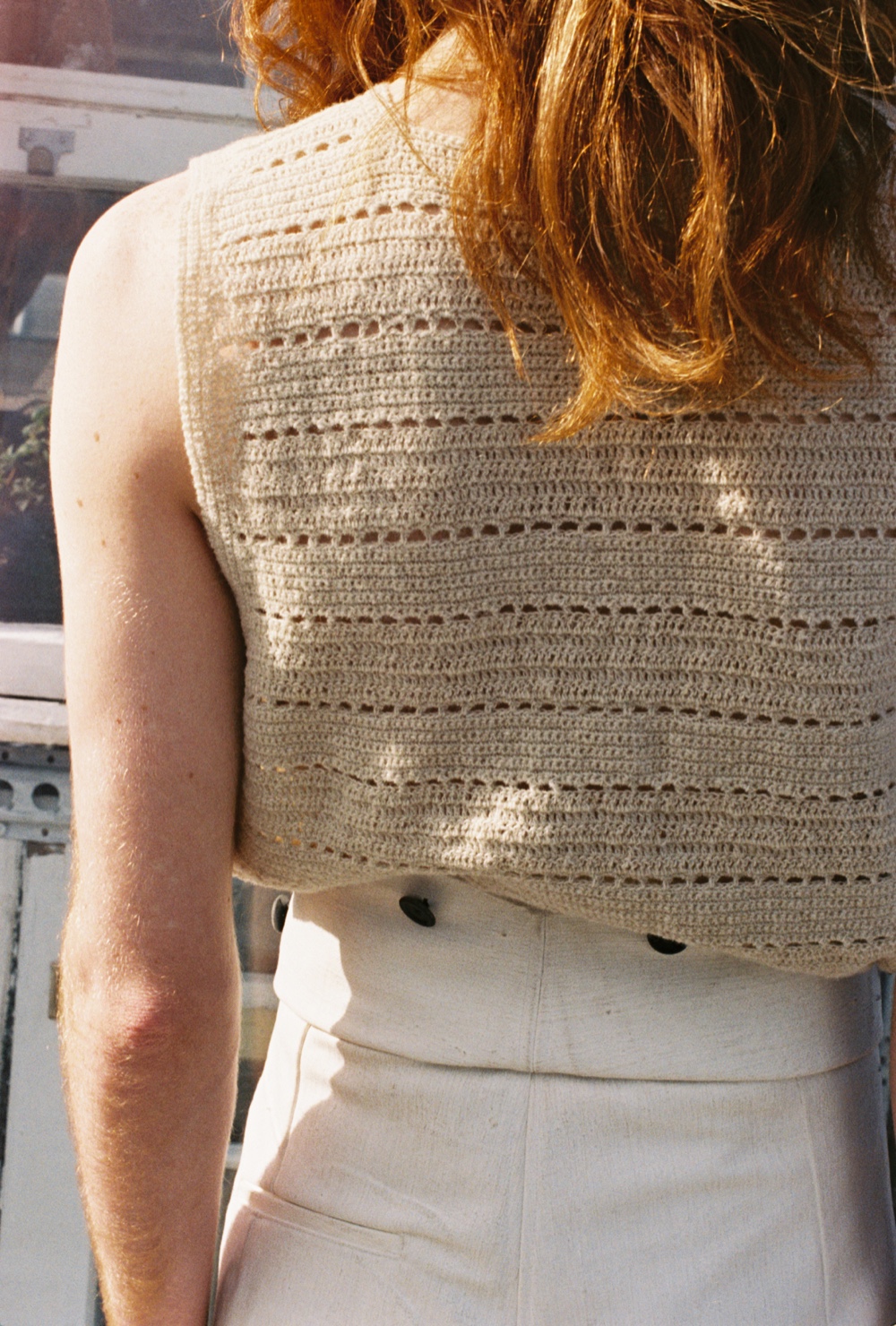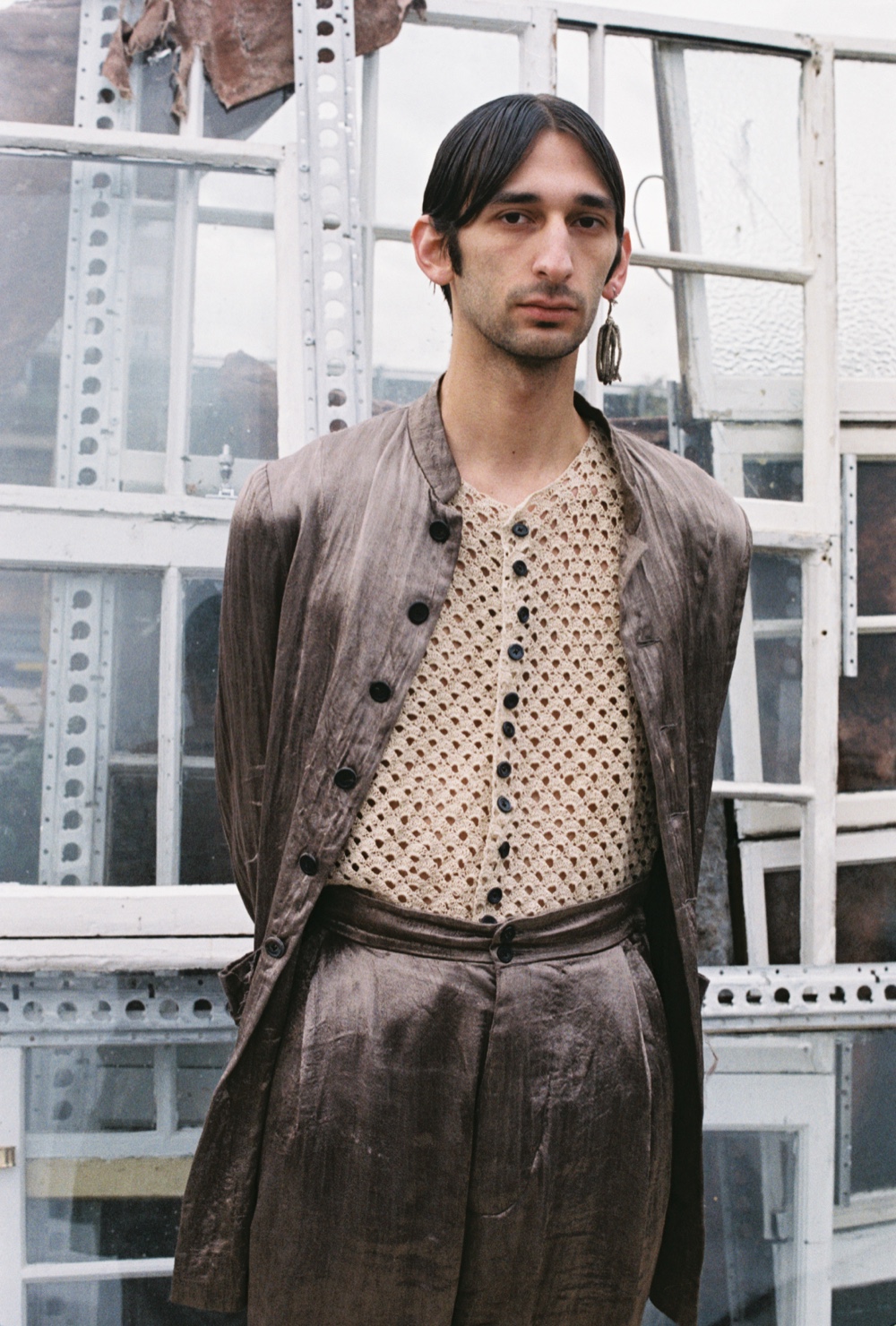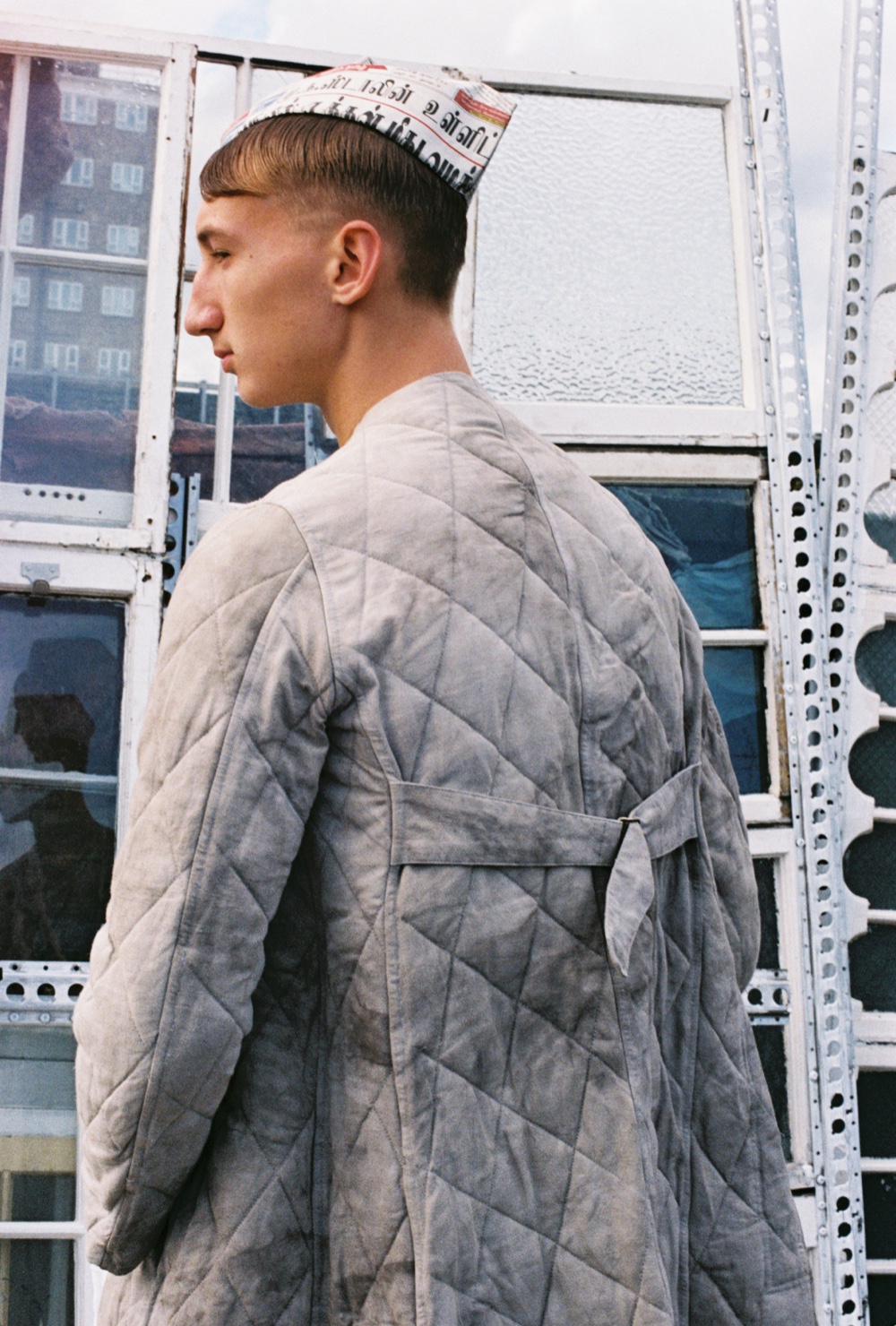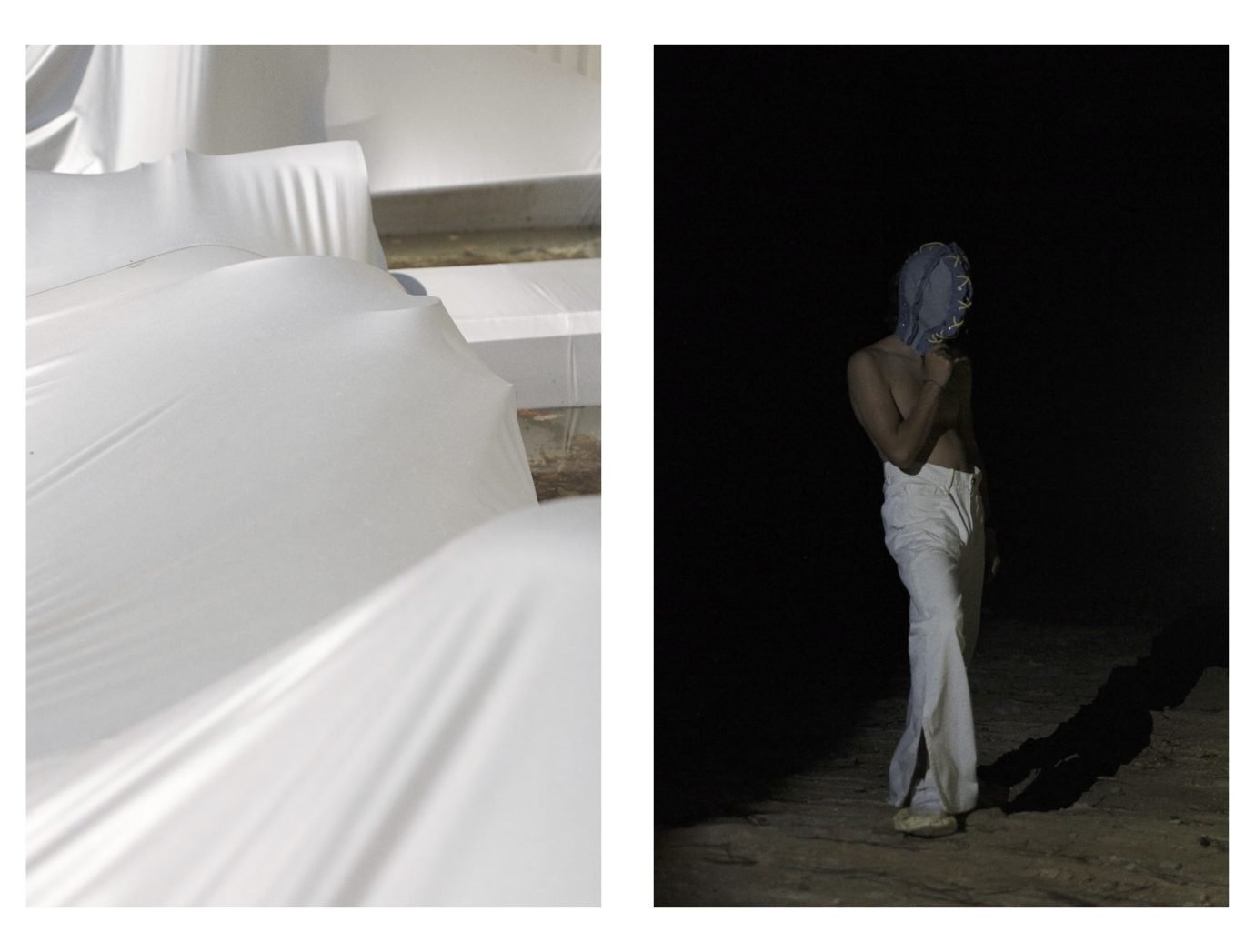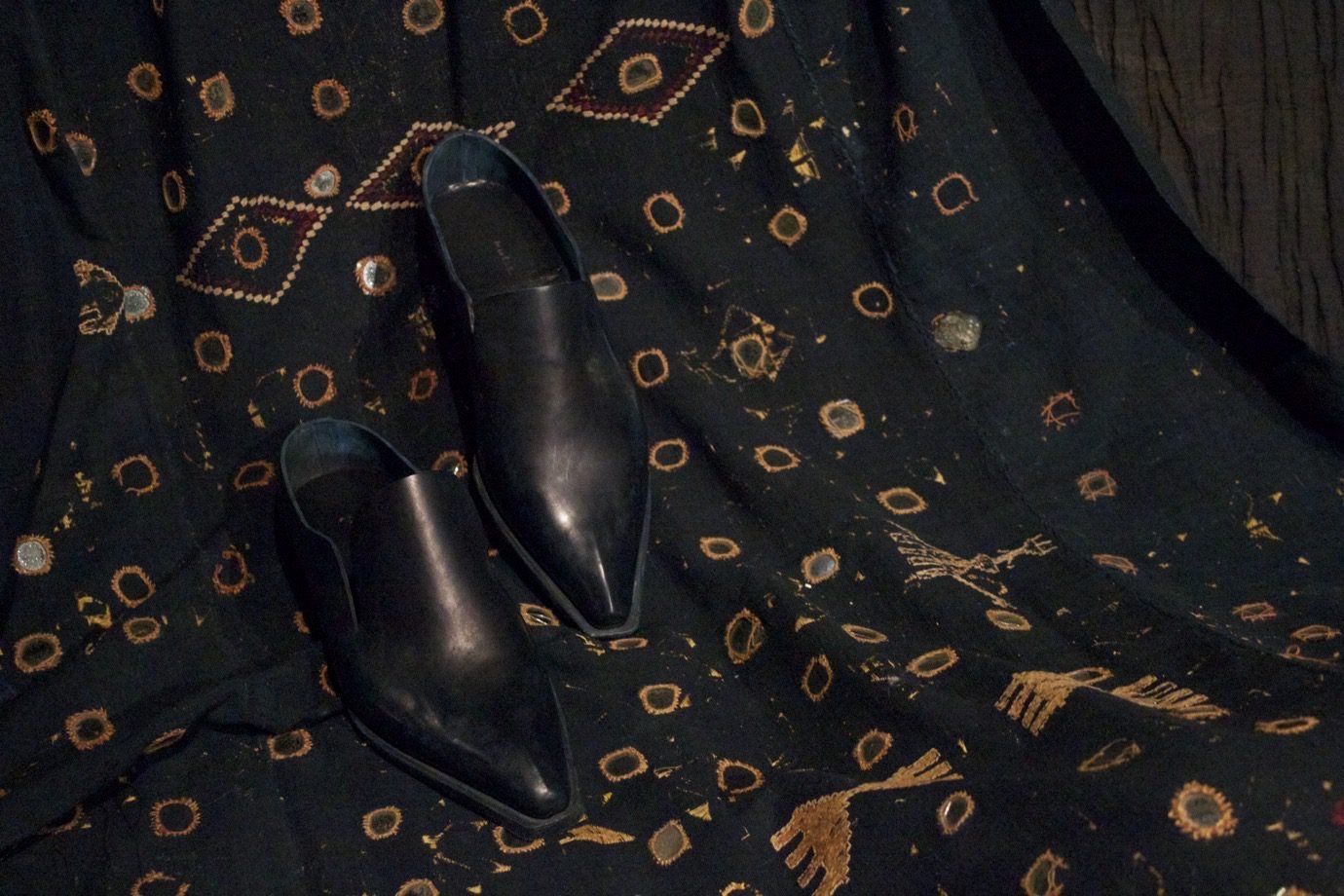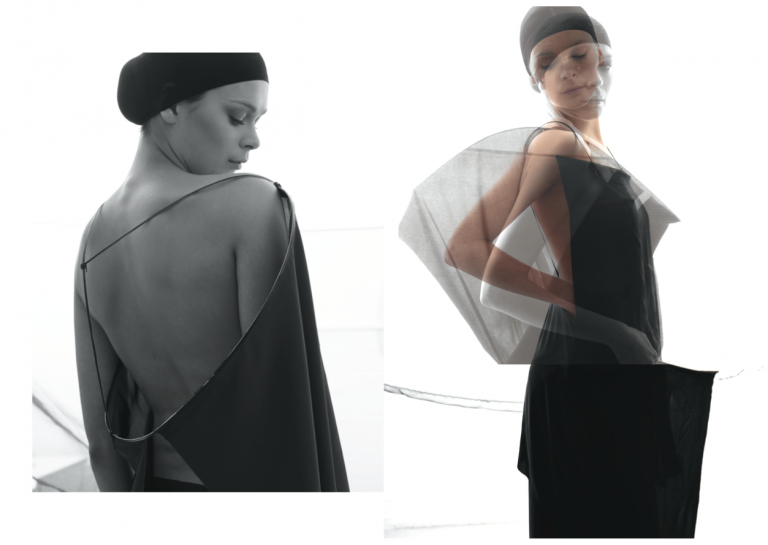His designs are obsessively researched, from the history of the divisive cotton trade between India and Britain in the 1920s, to the ‘Mass Observation’ survey of 1936, where the lives of ordinary working-class people were documented; research that is often an ode to his own family who have worked in trade industries themselves, with his father a mechanic and his grandfather a welder of fine, intricate works. Skelton’s adoration of the past is evident in his yearning for a better future, being appalled by the overflowing landfills, mass consumption and trend-driven purchases of the fashion industry, and he has a quietly principled desire to make a more authentic world through his soulful designs.
Through the intricacies in every garment – wool sourced from rare seaweed-fed coastal sheep, fabrics sourced from antique sellers around the country, garments buried in the ground to give them an aged patina, and items hand-dyed with rust and leaves, we get only a small glimpse into the Yorkshire-born designer’s devotion to his vision of realness, grit, and timeless-beauty. In his SS17 collection we see a continuation of these themes: white jackets and trousers that look like they are made of hundreds of white patches, elegant suits of a heavy brown fabric that suggest Victorian refinement, Miss Trunchbull, with your own knowledge that this suit is about to be a life-long-friend. The designs are mature, but also covetable, soft and cool. They have sempiternal tones of your great grandfather’s pre-war sunday best, though remain utterly modern: for what is more modern than Skelton’s move against the current fashion zeitgeist, with every stitch having a thought, meaning, and a purpose? There are suit sets of mushroom brown silk, and long linen coats that evoke early-Edwardian pinafores, and the milkman, long days at Wimbledon, children playing in the cobbled alleys between terrace houses in Sheffield, and of a Turn of the Screwmystery.
There remains a realness throughout however, evident in the cut and the finish of the garments. They are weighty and evoke a hardiness and strength, which makes John’s ‘Mass Observation’ research ever-more apparent. The clothes call upon a British heritage, but the kind that is usually forgotten. For these reasons John Skelton could be the most romantic emerging designer: both through his own optimistic vision of our world, with his aim to change things – little by little and in the way he knows best, and in the collection, as an ode to the elegant working-class men who through craft, skill and perseverance built the country.

